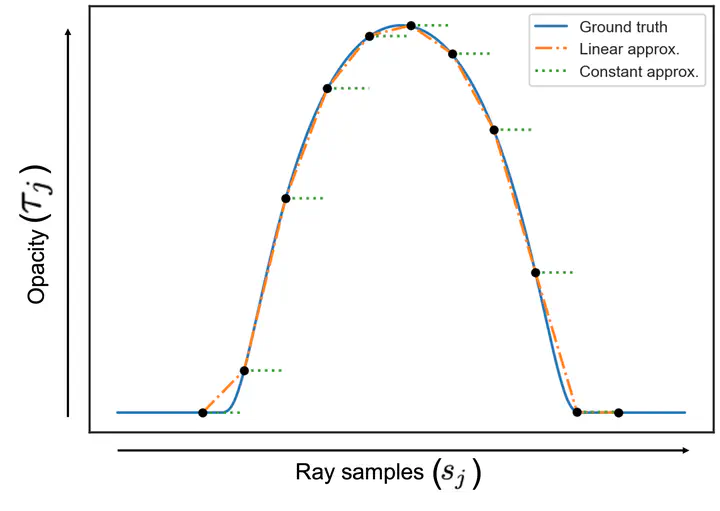NeRF Revisited: Fixing Quadrature Instability in Volume Rendering

Abstract
Neural radiance fields (NeRF) rely on volume rendering to synthesize novel views. Volume rendering requires evaluating an integral along each ray, which is numerically approximated with a finite sum that corresponds to the exact integral along the ray under piecewise constant volume density. As a consequence, the rendered result is unstable w.r.t. the choice of samples along the ray, a phenomenon that we dub quadrature instability. We propose a mathematically principled solution by reformulating the sample-based rendering equation so that it corresponds to the exact integral under piecewise linear volume density. This simultaneously resolves multiple issues: conflicts between samples along different rays, imprecise hierarchical sampling, and non-differentiability of quantiles of ray termination distances w.r.t. model parameters. We demonstrate several benefits over the classical sample-based rendering equation, such as sharper textures, better geometric reconstruction, and stronger depth supervision. Our proposed formulation can be also be used as a drop-in replacement to the volume rendering equation for existing methods like NeRFs.
@inproceedings{uy-plnerf-neurips23,
title = {NeRF Revisited: Fixing Quadrature Instability in Volume Rendering},
author = {Mikaela Angelina Uy and George Kiyohiro Nakayama and Guandao Yang and Rahul Krishna Thomas and Leonidas Guibas and Ke Li},
booktitle = {Advances in Neural Information Processing Systems (NeurIPS)},
year = {2023}
}